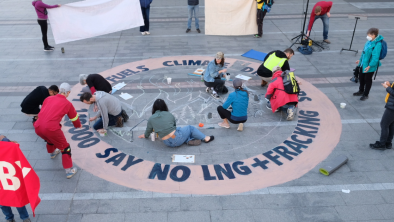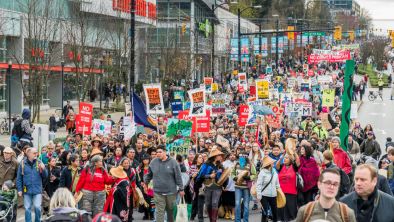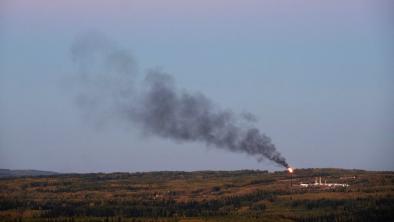Aboriginal consent crucial to energy development
Friday, May 09, 2014
The Globe and Mail

If the joint review panel report on the proposed Site C dam confirmed anything, it is the pivotal and non-negotiable role that First Nations are now playing in energy development in Canada.
As final assessments go, the panel ended up taking a position that was decidedly on the fence, giving neither opponents nor proponents of the project enough to declare victory. Yes, the benefits of a new hydroelectric dam on the Peace River are clear; yes, farmland would be lost, but not a significant amount in the grand scheme of things.
But the panel also said there are legitimate questions about the extent to which the dam is actually needed at the moment. And it sounded alarms about some of the numbers BC Hydro has used to justify the project.
But more than anything, the report made clear how crucial it is for Hydro, and by extension the government, to get buy-in from the First Nations communities that the review panel said would be affected negatively. Without it, the panel said, the province is just asking for trouble and possibly years of litigation.
This would be something you would think the government would have insisted on in any event. After all, when it comes to pipelines, Premier Christy Clark has made aboriginal consent one of the five conditions she insists must be met before any project goes ahead. She could hardly now say that does not apply to energy developments her own government is backing.
The province has six months to make a decision about the dam’s fate. I don’t see how it can possibly reach any kind of deal with the First Nations in that space of time.
Meantime, all British Columbians should be concerned about some of the other issues that flow from the panel investigation. Perhaps the most pressing is the government’s reluctance to send BC Hydro’s proposal to the independent B.C. Utilities’ Commission for further scrutiny. Energy Minister Bill Bennett pretty much rejected that suggestion on Thursday. Taxpayers should be appalled by that response, given the billions of dollars Hydro is contemplating spending here.
The projected cost of Site C, as it stands right now, is $8-billion. But if you read the review closely enough, you can easily conjure an image of the report’s authors rolling their eyes as they consider the data that form the foundation of Hydro’s cost estimates. In one section of the report, for instance, the reviewers talk about the manner in which Hydro went about determining the average cost of capital for the project.
It is best to avoid the mind-numbing technical aspects of this discussion; suffice to say that the panel concluded that at least one component of the capital cost equation was “largely fictional.” The report goes on to say: “Such an accounting marvel should not be allowed to drive choices that would affect the B.C. economy and landscape for decades to come.”
In that sentence, the panel could not have been clearer regarding its doubts about the veracity of Hydro’s numbers. Ms. Clark likes to talk about the respect with which she treats taxpayer dollars, how she does not spend a dime without considering the hard work that went into producing it. Yet here we have a situation where government is talking about spending at least $8-billion while refusing to get a second opinion on how real that estimate is.
That is unconscionable.
The panel recommends sending all of Hydro’s forecasts for pricing and project costs to the utilities commission for analysis. And that has to be a bottom line here. Ignoring the oversight function of the BCUC is simply wrong, not to mention incredibly hypocritical. This is a project that would affect B.C. for generations to come.
There is time to audit Hydro’s numbers. Governments in B.C. have been talking about this project for more than 30 years; if it takes another year for the utilities commission to take a sober second look at the underlying financial imperatives of Hydro’s proposal – as well as its actual need and possible alternatives – then so be it.
I remember attending Site C hearings in Fort St. John in the early 1980s. At the time, there seemed little reason to believe the project would not go ahead. Who could have imagined that, more than three decades later, we would still be debating its merits?
Photo: A portion of the Peace River Valley that would be flooded if the Site C Dam were to be built - photo by Don Hoffmann.


